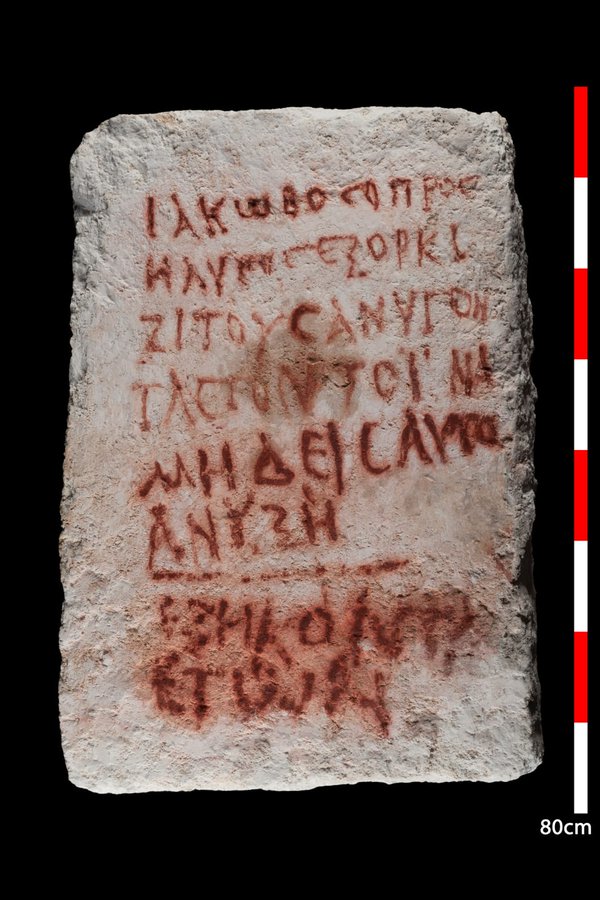JERUSALEM (VINnews) — For the first time in 65 years a new tomb inscription has been found at the Beit She’arim catacombs, shedding light on Jewish life at the site during the Tannaic and Amoraic periods.
Join our WhatsApp groupSubscribe to our Daily Roundup Email
About 1,800 years ago, some time after the death of Rabbi Yehuda Hanasi who is the most famous person buried at Beit Shearim, a convert to Judaism named Yaakov died and was interred in a cave at Beit She’arim. In an attempt to deter grave robbers from exhuming his bones, the convert had a tombstone designed in bold red paint. The tombstone, written in Greek, refers to Yaakov Hager, who apparently died at age 60.
The inscription, in eerie red paint, the eight lines on a stone slab that was left leaning against the opening of the burial alcove, say: “Jacob the Proselyte vows to curse anybody who would open this grave, so nobody will open it. He was 60.”
The last line with his age is written in a slightly different script and was apparently added after his death.
Beit She’arim was a Jewish town in the Lower Galilee during the Roman period, which arose in the late first century C.E. Following Jerusalem’s total destruction in 70 C.E., the town became a center of Jewish culture and learning: the Sanhedrin moved there among its other sojourns.
Though the Beit She’arim tombs had been studied quite extensively, the catacomb in which Yaakov HaGer had been buried had been unknown until last year, when it was found by chance. It turned out to be part of a complex of interconnected burial caves, archaeologists from the Israel Antiquities Authority and University of Haifa revealed on Wednesday.
Inside the innermost chamber, the researchers discovered not one but two inscriptions written in Greek, in red paint. The two were deciphered by Jonathan Price, professor of ancient history at Tel Aviv University.
The small inscription painted in red on a limestone wall near the burial lodge simply says “Judah” and refers to the owner of the tomb, according to researchers. However the larger inscription was more intriguing as it refers to a ger, a Jewish proselyte, at a time when Christianity was gaining strength. In the 4th century all conversions to Judaism were banned but Jacob was apparently an earlier convert, who may have been part of the distinguished Jewish community residing at the site.


Do NOT open the grave.
This is not the year.